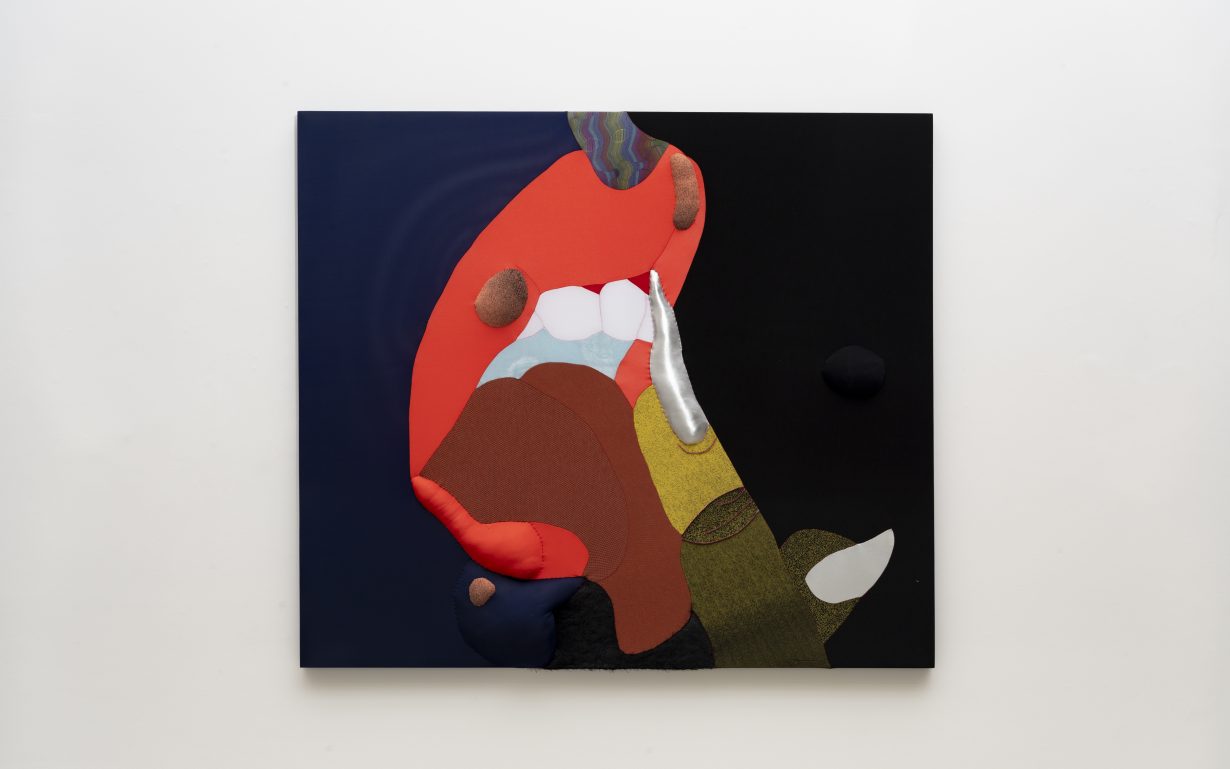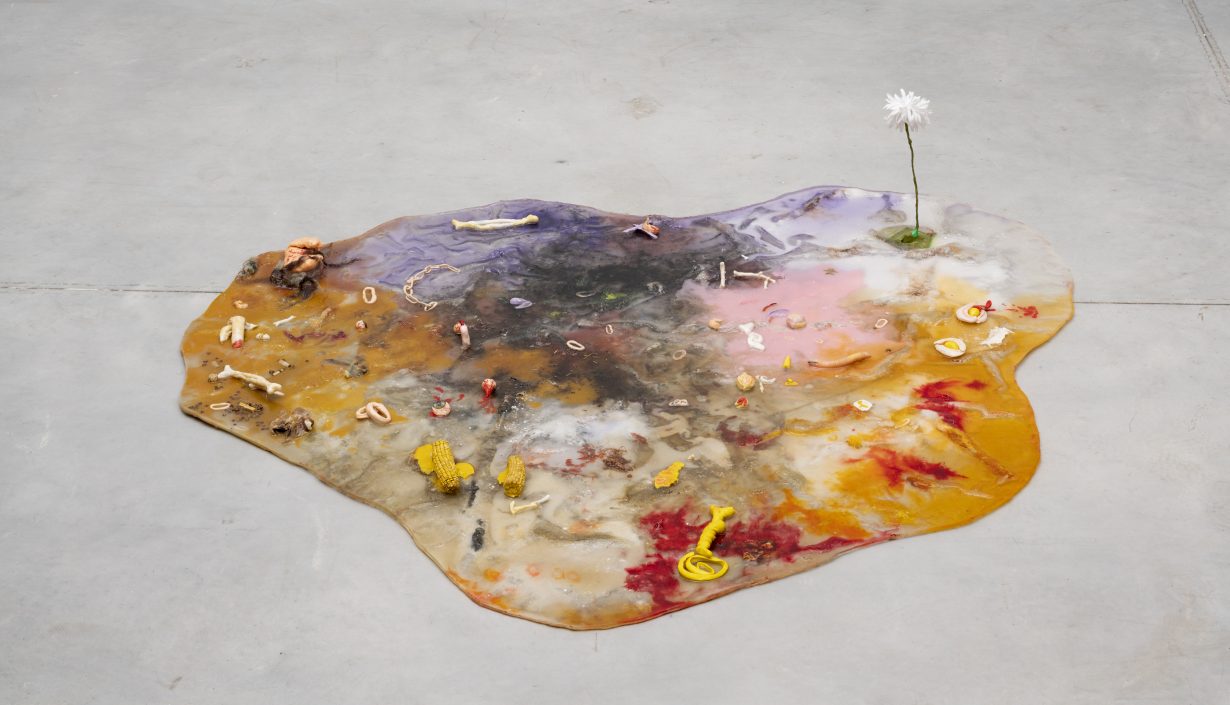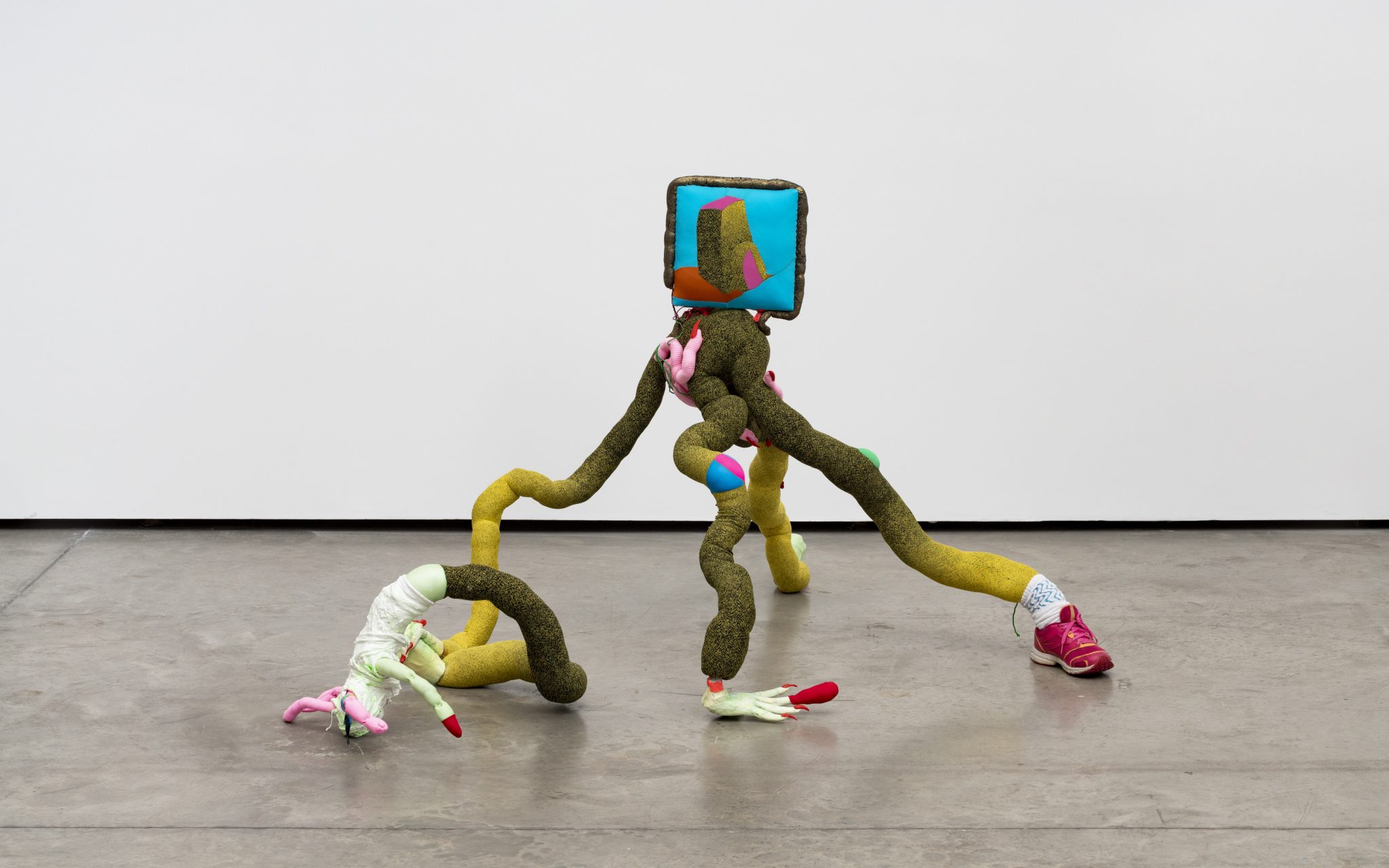Selected by Oliver Basciano
After spending time in Yuli Yamagata’s studio in downtown São Paulo, I’m itching to mention a painting to her, but I can’t for the life of me remember who made it. Walking home, I realised I was thinking of several works by the Dutch seventeenth-century artist Abraham Mignon. There’s Still life with Rotting Fruit and Nuts on a Stone Ledge (c. 1670), for example, and Still Life with Fruits, Foliage and Insects (c. 1669). I went to send her a picture, with a comment about the monstrousness of the compositions – how, crowded together and in decay, the foodstuffs had become grimly alien and supernatural. How, I thought, a similar macabre spirit permeated her work. Yamagata however had messaged me in the meantime. She had sent a MikuMikuDance gif, the Japanese freeware program designed so users could create their own animated dances but increasingly taken up by fetishists. In this example a giant anime schoolgirl, in the vein of Attack of the 50 Foot Woman (1958), titillates a city by waving her bare feet across the skyscrapers. For some this might be sexy, but for most it’s kind of gross and horrifying (which is where the allure might stem from of course). That Yamagata’s textile sculptures and wall assemblages can encapsulate all these references, yet have little in the way of forebears, is what attracts me.
In Moon light (2023), for example, shown at a solo exhibition at Anton Kern’s vitrine gallery in New York last September, glazed terracotta corn on the cob, some of the cobs fragmented, are mounted on a plaster backing. There’s a feeling of decomposition and mould to the arrangement, but the work boasts a silk tubular frame, like a sausage in a kimono, which adds an unexpected glitz. It’s a discombobulation apparent in the melancholic Corn in butter Ikebana (2023), from the same show, in which dead flowers emerge from the end of an intact ear of corn. Both corn and flowers sit on a resin approximation of a lump of butter, and a sad popped red balloon hangs from one of the stems. More obviously seedy is Noite no hotel (vigilia) (Night at the hotel [surveillance]) from 2021, which I saw that year in her show Insomnia at Fortes D’Aloia & Gabriel in São Paulo. It is a textile collage of Lycra and velvet in which a woman, with a wig of green hair, clambers over a hotel bed, her limbs slightly out of proportion, inviting bum cheeks defined by a thread of cotton stuck onto the canvas surface.

Corn became a recurring motif for Yamagata after her parents began, a few years ago, to send her photos of their lunches. It was their way of reconnecting during an ongoing argument over Bolsonaro-era politics, but for Yamagata the mundanity of the food imagery took on an ominous feel as it mixed with the tenseness of the situation. For the artist, the food became imbued with a sickness, reflective of the poisonous political times. Other motifs, which include snakes and eyeballs, octopi and long tentacular fingers, have a less specific origin, though are rooted in her teenage cultural diet of anime and Japanese monsters. She took to the latter, ensconced in her bedroom, as a way of navigating a typically mixed-race feeling of unmoored identity: not looking Japanese enough, she says, among her mother’s family, but sticking out in the south Brazilian state of Santa Catarina where she grew up.

Until recently, Yamagata’s textile work has been brightly coloured, coded by the palette of the sports Lycra she invariably uses. As she prepares for another show at Anton Kern, this time in the main space, in October, that is changing. She will cover the fabric with a ghostly pale paint and will use textiles and other materials that already have a history, either in that they are secondhand, or they have a longer lineage than the engineered exercise fabric. Thinking about time and death, Yamagata says she might call the show Ghosts Don’t Wear Watches.
Having taken up art because she dreamed of working at Studio Ghibli (though her teachers dismissed cartoons as unserious), she will also make her first film: an animation featuring a tomato and lettuce who, just married, are involved in a car crash. The premise sounds cute, but then she shows me storyboards and it’s anything but – the faceless foodstuffs get diced up into a salad as their red and green bodies hit the ground. She also makes ornate chairs, though until now they have been unusable, covered in a bricolage of corn, snakes and limbs, but Yamagata is considering creating some so that visitors to the October show can sit down to view the film. She talks about Brazilian superstitions around old furniture, how it might be inhabited by the spirit of previous owners, and I remember precisely why I thought of Mignon during our conversation. Those works were painted as reminders of the brevity of life, and in Yamagata’s hands mundane images, made monstrous or haunted, are likewise imbued with a slice of existential dread.

Yuli Yamagata is a multidisciplinary artist born in São Paulo, where she continues to live and work. She obtained her BFA from the University of São Paulo in 2015. An exhibition of her work will open at Anton Kern Gallery in New York in October.
Oliver Basciano is editor-at-large for ArtReview.
